
Topics
Guests
- Marty Nathansurvivor of the 1979 Greensboro massacre, widow of Dr. Mike Nathan, who was killed in the massacre.
It’s been 40 years since Ku Klux Klansmen and American Nazis opened fire on an anti-Klan demonstration in Greensboro, North Carolina, killing five anti-racist activists. The killing spree took 88 seconds. No one was convicted for the massacre. We speak with Dr. Marty Nathan, whose husband Dr. Mike Nathan was killed in the 1979 Greensboro massacre, in Part 2 of a discussion about the massacre, the resurgence of white supremacy today, and how families continue to seek justice for those lost in the 1979 shooting.
Transcript
AMY GOODMAN: This is Democracy Now!, democracynow.org, The War and Peace Report, as we bring you Part 2 of our coverage of the hundreds of people who gathered this weekend to mark the 40th anniversary of the Greensboro massacre in North Carolina, when 40 Ku Klux Klansmen and American Nazis opened fire on an anti-Klan demonstration in Greensboro. Over the span of 88 seconds, the Klan and Nazis shot dead five anti-racist activists who were members of the Communist Workers’ Party. Ten other people were injured. No one was convicted in the massacre, but a jury did find the Greensboro police liable for cooperating with the KKK in a wrongful death.
On Sunday, survivors, family and friends held a ceremony to remember the five victims of the massacre at Maplewood Cemetery in Greensboro. This clip begins with the words of survivor Reverend Nelson Johnson, who organized the 1979 rally.
REV. NELSON JOHNSON: We are in this sacred place to remember, to deepen our own belief in the cause for which they died, to continue to build relationships among ourselves, but stretching to the broader community and to recommit to the work for which they died.
STEPDAUGHTER OF JIM WALLER: Jim Waller was my stepfather. He was a doctor, a Bob Dylan fan. And he was fighting for justice.
COMMEMORATORS: Amen. ¡Jim Waller, presente!
FRIEND OF CÉSAR CAUCE: César Cauce was a friend and co-worker of mine at Duke Hospital, where he was a leader of the organizing drive.
COMMEMORATORS: ¡César Cauce, presente!
DR. MARTY NATHAN: Mike Nathan was a physician, a lover of justice, a lover of peace. Mike Nathan.
COMMEMORATORS: ¡Presente!
FRIEND OF WILLIAM SAMPSON: William “Bill” Sampson. So, we’ve talked a lot about Bill’s work and all the things he contributed, but I want to lift up Bill’s humanity.
COMMEMORATORS: Yes.
FRIEND OF WILLIAM SAMPSON: ¡Bill Sampson, presente!
COMMEMORATORS: ¡Presente! ¡Presente!
NIECE OF SANDRA NEELY SMITH: Sandra Lee Neely Smith. Sandy, as we called her, obviously was a queen and fighter for justice. Sandy, more importantly to the children of the movement who did not know what was going on, was the best darn aunty, babysitter and everything we could ask for. Sandy Smith.
COMMEMORATORS: ¡Presente!
AMY GOODMAN: That was part of the remembrance this weekend in Greensboro, North Carolina, for the five people who were murdered by the Ku Klux Klan and American Nazis on November 3rd, 1979. We’re continuing our conversation with Dr. Marty Nathan, the widow of one of those five, Dr. Mike Nathan, one of the five people killed in the Greensboro massacre. Marty Nathan and other survivors successfully sued Klansmen, Nazis and the Greensboro police.
So, Dr. Marty Nathan, in Part 1 of our discussion, you described that day, and you described the line of cars when the Nazis and KKK got out and opened fire on your protest. Where were you?
DR. MARTY NATHAN: I actually was at the second starting place of the march. There was another place that was more easily accessible to people from out of town. Mike and I lived in Durham. And that’s — I was at Windsor Center, which is right on the main drag in Greensboro. And Jim Waller came over. Mike and I ran the first aid car for cuts and bruises and people too tired to go on. And Jim asked for me — for one of us to go over to Morningside, which is where the attack occurred, which was much deeper and harder to find in the community. And that’s an important thing, and I’ll talk about that in a moment. And Mike went over, and I stayed at Windsor Center. So, my knowledge of what happened is from all that my friends have said over the years and also from those videotapes.
The reason I wanted to mention how hard Morningside was to find was because the only way a bunch of Klansmen could have found it in order to attack this march was because they received the permit, the parade permit — this was a lawful march — from the police the very day that we received it. And it had on the back two things. One was the map of the march and said that we were going to be at Carver and Everitt Street. And the other thing that it said was that we were not allowed to be armed, not even with sticks greater than 2-by-2 inches. And so, the police had disarmed the people who were going to be attacked, had told the Klan how to get to us, and then withdrawn, as they knew, the police, that the Ku Klux Klan and American Nazis, heavily armed, were crossing town to come to attack us.
We know, in fact — we proved in the trial, in the Greensboro civil rights suit trial, that not only were they sent to an early lunch, and they’ve always said, “Well, you know, we didn’t know where you are.” That’s not true; they had the parade permit. Number two, “Oh, we just made a mistake. And so we withdrew, OK, and sent people to an early lunch.” We call that the doofus defense. That one does not hold, either, because we know that a female Greensboro police person had gone into Morningside Homes to deal with a domestic violence issue. And she had been told — as the Klan started to move across town, she was told specifically to clear the area. And she remembered that years later, because that was such an unusual order from the dispatcher. There was no reason to clear the area, except if you consider that they wanted no police there to protect us.
AMY GOODMAN: So, I wanted to turn to Reverend Nelson Johnson, a survivor of the massacre. In November 2004, on the 25th anniversary of the attack, I asked him — and we saw him in today’s video also commemorating in this 40th anniversary, but back 15 years ago, I asked about the video footage of the aftermath of the horrific shooting, where we see the police going after him.
REV. NELSON JOHNSON: Well, because I negotiated the [inaudible] with the police, I, perhaps more than anyone else, was pretty clear that the whole arrangement that we made with the police had been betrayed. And I stood up to say that there isn’t any way that this could happen without the police. And the police then came and demanded that I be quiet. And when I refused to do so, they arrested me and threw me to the ground. And the man who became the police chief had his foot on my neck. And I was bleeding pretty profusely at the time from the knife wound, so that may be some of what you’re referring to.
AMY GOODMAN: Did they arrest you?
REV. NELSON JOHNSON: They arrested me and held me, did not set a bond. As a matter of fact, I have had seven charges brought against me directly growing out of the incident of 1979. And I have been in jail under a bond twice that of any Klansperson. I was once in jail for $150,000, allegedly for using bad language. And Klansmen were in for murder for $50,000. So, if you work with that, it gives you a sense of the atmosphere, which was unbelievable, except for those of us who were in it. It’s not something that I often hear in detail, because it doesn’t really make sense to many people around the country.
AMY GOODMAN: So, that’s, well, now Reverend Nelson Johnson, and he was at the 40th anniversary observance this past weekend, Nelson Johnson. I mean, that video footage, Dr. Marty Nathan, is incredible, of the police attacking him. You have one person after another being killed by the Klan and the American Nazis, and the police are jumping on him. And as he said, the guy who would later become the police chief of Greensboro has his foot on Nelson Johnson’s neck.
DR. MARTY NATHAN: Yes. And that’s emblematic of what they did to Nelson, his wife Joyce, Willena Cannon, who was there trying to protect Nelson, all of them longtime activists and leaders within Greensboro, who the police had hated for many years. And it’s an indication of the upside-down nature of the whole so-called justice process that went on for the next several years until the Greensboro civil rights suit. And in order to protect people in the future, you were — you had this wonderful clip that was just heartbreaking about the targeting of climate leaders or environmental leaders, indigenous people in Bolsonaro’s Brazil, and then also the horrible treatment of the homeless in San Francisco. I mean, those are targeted people, and those are throwaway people, that are outside the realm of justice. And in many ways, the Greensboro massacre was a much earlier reflection of both of those things. And it’s not as if it hadn’t happened before us. We were different only because there was videotape of what happened to us, and we had hellaciously good lawyers who helped us fight the Greensboro civil rights suit. And also we had leaders, people like Nelson and Joyce and Willena, who fought continuously for 40 years to get the kind of deterrence and justice and truth out. From 2004 to 2006, after that tape, we had the country’s first truth and reconciliation process in Greensboro, totally done from the grassroots, which showed that in fact the Greensboro police were deeply involved and responsible for the deaths.
AMY GOODMAN: So, explain when the two juries, all-white juries, acquitted the Klansmen and the American Nazis. Explain who exactly was on trial.
DR. MARTY NATHAN: In the first — yeah, that’s — thank you for helping me to clarify this. In the first trial, there were six Klansmen and Nazis. The shooters, that are videotaped mowing people down, were on trial. However, one of the aspects of the upside-down justice and the cover-up was that Nelson and five other people were — had pending felony charges, in which they faced up to 20 years, and at the same time that the Nazis and the Klansmen were being tried. And we were being told that anything that we said in the court of law could be used against Nelson and our friends, whose only crime was to organize against the Klan, and some of them did defend themselves against the Klan, and that was it. So, we were totally caught in a bind. And then the prosecutors were covering up the involvement of both police and federal agents.
The second trial was a federal civil rights criminal trial that had been only brought about in the Reagan — by the Reagan Justice Department because of this upswelling of demand for justice after the first trial. It was not just in Greensboro, Durham, Charlotte, but all around the country. People were just horrified that this thing had — that these killers had been let go. And so, even Reagan’s Justice Department was forced to respond and file civil rights charges against those same Klansmen and Nazis, including Ed Dawson, but certainly not the police.
But then, once again, they had to do their cover-up part. They could not bring out the whole story. And I won’t even get into this. And they used particular laws to try them that would mean that they would be able to stay away from the issue of federal and local involvement. And so, once again, it ended up being a cover-up that completely destroyed their own prosecution. Whether or not they really wanted to complete that prosecution, I cannot get into their heads. But anyway, it was also a fixed trial. And it was very — as the victims, we — even though we tried not to have illusions about what was going to happen, I think in many ways that was the last shoe to drop in terms of any belief in the system working —
AMY GOODMAN: So, I wanted —
DR. MARTY NATHAN: — on behalf of targeted activists,
AMY GOODMAN: Marty Nathan, I wanted to go to the Truth and Reconciliation Commission that you referred to.
DR. MARTY NATHAN: Sure.
AMY GOODMAN: Greensboro held the first Truth and Reconciliation Commission in the United States. Let’s go to Pat Clark, a member of the commission, announcing —
DR. MARTY NATHAN: OK.
AMY GOODMAN: — the group’s findings 13 years ago, in 2006.
PAT CLARK: The primary contributor to the loss of life was the absence of police, which endangered the welfare of all involved, including residents in Morningside Homes, where the shootings took place. Nearly all commissioners believe that the police absence was the result of some intentionality on the part of at least some officers in the Greensboro Police Department. Paid police informant and Greensboro Klansman Eddie Dawson played a leadership role in bringing the Klan and Nazis into contact with the Communist Workers’ Party.
AMY GOODMAN: So, that’s Pat Clark, a member of the Truth and Reconciliation Commission, announcing the group’s findings in 2006. Dr. Marty Nathan, talk about this commission, who was on it and what was unearthed and uncovered in these findings.
DR. MARTY NATHAN: This was a pretty broad spectrum of people that were local, state and national, who were chosen by many community groups in Greensboro to try to be as objective as possible. People who had no preconceived notions were tried for, we tried to get. I actually — when I say “we,” I had nothing to do with that part. And the evidence, I think, was just so overwhelming that the results were totally damning against the city of Greensboro. And you have first these two trials, criminal trials, then the civil rights suit, in which they literally paid the victims and said nothing about why they were paying the victims. And when I say “they,” I’m talking about the city of Greensboro. And they paid for the Ku Klux Klan and Nazis, too, for the shooters, which is, you know, an important irony. And then you have the Truth and Reconciliation Commission, which is completely damning to the city of Greensboro.
And throughout all that, the city has remained quiet. In fact, the city tried very, very hard not — they voted against having — not just supporting, having — the Truth and Reconciliation Commission. And then, finally, in 2015, the state historical society, who had nothing to do with anything except they studied this event, said that “We are going to put a historical marker at the site of the murders, and we are going to say this was the Greensboro massacre.” The city of Greensboro has wanted this thing to go away, but if it had to stay in the city of Greensboro, it was going to be called a shootout between two equally horrendous, violent and outside groups who happened to pick the town, even though many of the people there that day, the majority, were Greensboro people.
AMY GOODMAN: So, let me —
DR. MARTY NATHAN: And all of them were working in — locally. So, finally, what we got, the Greensboro massacre, the city did not want that historical marker to go up. People in the community, particularly the black community, fought long and hard, and it is up there today, that historical marker for the Greensboro massacre. And when we went to visit it, there was a bullet hole in the pole.
AMY GOODMAN: I’m looking at the sign right now. It says, ”GREENSBORO MASSACRE Ku Klux Klan members and American Nazis, on Nov. 3, 1979, shot and killed five Communist Workers Party members one-tenth mile north.” So, I want to go now to a clip from a documentary about the Greensboro massacre by filmmaker Laura Seel.
DR. MARTY NATHAN: Great.
AMY GOODMAN: This is civil rights lawyer Lewis Pitts, who represented you and others in a civil lawsuit against the Greensboro police, government officials, the Klan and the Nazis.
LEWIS PITTS: When we got involved as civil rights lawyers, hired by and representing the survivors, the widows, we had every incentive to tell the full story. And, for the first time, the people’s lawyers had subpoena power. And we found a trove, trunksload of incriminating evidence right out of the police files. If the police knew, why didn’t they stop it? Why didn’t they warn the demonstrators of the nine-car caravan carrying the Klan and Nazis with all those weapons? The 10th car was an unmarked police car with the detective, Cooper, who was the handler of the informant, and a photographer, a police photographer. They followed them in, parked, did not call for help, did not do anything to warn the demonstrators, and took photographs as they pulled out weapons and murdered people.
AMY GOODMAN: So, that’s civil rights lawyer Lewis Pitts, representing Dr. Marty Nathan, our guest, and other survivors in the civil lawsuit against the Greensboro police, government officials, the Klan and the Nazis. What came of this suit, Marty?
DR. MARTY NATHAN: They found Klansmen and Nazis, the informant, Edward Dawson, and two police officers, including “Rooster” Cooper, liable for the death of Michael Nathan. There were also charges found against two other demonstrators who were badly injured. And the city then paid the damages. When I say “they,” it was a not-all-white jury who — a federal jury, who found that verdict. For the first time in six years, there was a black man on that jury, and it made all the difference. He injected a reality, a social and just day-to-day moral reality, into the discussion in that jury room, I do believe. And it ended up in something that approached justice.
AMY GOODMAN: And so, now faith leaders calling for the city of Greensboro to officially apologize. Now, the city would say they have apologized, but explain what’s being called for now.
DR. MARTY NATHAN: You know, they issued, after Charlottesville, a “sorry for your loss” sort of apology. And you and I know, having probably both lost people, that “sorry for your loss” just doesn’t get it, particularly if you were involved in the creation of the loss. They did not do anything that touched my heart or the hearts of any of the victims to indicate their sincerity. And they also did not — if you’re saying, “I’m sorry that I was responsible for the death of these five people,” they did not say, “Oh, these are the things I’m going to do to fix it. These are the changes in policy, training, communications, all of those things that would mean that it’s not going to happen again. And these are not the people I’m going to fire, that — who who were responsible.” OK? So, there is so much left to be done in order to deter future violence. And then, ultimately, after you lose somebody, there’s nothing else that you can lose. But what you can hope in all this is that you can change the future. For victims of racist violence, white supremacist violence, that’s the goal.
We’re facing a time when Donald Trump is behind the white supremacists. We saw that in Charlottesville. We’re seeing it all over, not just the country, but the world. And we have to — what is going to stop that is people saying, “Enough is enough. No more targeting. No more killing the expendable people, who frequently are black and brown in this country. No, we stand for the rights of people to live and to live decently. In a time of climate change, threat of nuclear war and increasing economic disparity, we all have to be in the streets, and we do not want to get shot.”
AMY GOODMAN: Finally, can you explain, Marty, the circumstances that brought you and many others to Greensboro, and Greensboro residents themselves, to gather on November 3rd, 1979.
DR. MARTY NATHAN: Of course. I’m sorry that I haven’t done that so far. The people who were killed and the WVO, who was leading that march, were organizing unions. They were revolutionaries. They were socialists. And they knew that in order to change the society, you have to have an organized working class. So, they were in the mills, and they were leading unions. And what they saw — if you’ve lived in the South, you know that the Klan not only attacks African Americans and Jews and Catholics, but — so it’s not only race-based, but it’s also economically based, Klan violence. And so, not surprisingly, when the Klan began to rise in 1979, where it was rising was in places that — where hard-hitting union organizing and strikes were occurring, including around the areas that people like Jim, Bill and Sandy were organizing.
And so, this was a response. This wasn’t, you know, out of nowhere. This was a response to a threat against unionization, by the Klan, which would historically split up workers, black and white, threaten the leaders and essentially act on behalf of the corporate owners. And that’s been happening. You know, it had been happening for over a hundred years. And so, the idea was to speak to this, say that what we needed for a society, for communities, that are truly in the hands of empowered people, is to stop the Klan. OK? We need it in order to build unions, in order to have safe African-American communities and in order to have democracy, because that kind of violence and racist separation simply is not consistent with a democracy.
AMY GOODMAN: And so, when you watched what happened in Charlottesville, when you watched the Klan march, when you saw the anti-fascist activists challenging the Klan, and then you saw the young woman, Heather Heyer, killed when one of these pro-Klan activists drove a car into a crowd of protesters, what were your thoughts?
DR. MARTY NATHAN: I can’t even explain my sense of loss and anger and identification. We were young. Heather Heyer was young. She was targeted. I don’t know the whole story there, but she was targeted because she was there facing the Klan. And the police allowed this to happen, from everything I understand. And that whole issue of deterrence, if you say, “This is not only illegal on the books, but we’re going to prevent it, and we’re going to prosecute like crazy those who violate these laws,” then it tends to stop. The Klan and white supremacists have only existed as they have been allowed to exist, as they have been encouraged to exist. And part of our movement — I’m a climate activist and organizer. And all of our movements are in jeopardy if the white supremacists and the violent right wing are allowed to do their thing. And their thing is violence and seeding division. We’re all at risk. We need to stop them, demand full prosecution, demand protection, demand safety on the streets and demand also that the laws that should be used against the violent right wing are not used to stop our movement.
AMY GOODMAN: Dr. Marty Nathan, I want to thank you for being with us, widow of Dr. Mike Nathan, one of the five who were killed in the 1979 Greensboro massacre. Dr. Marty Nathan and other survivors successfully sued Klansmen, Nazis and the Greensboro police. She’s co-founder of the Markham-Nathan Fund for Social Justice in Western Massachusetts. To see Part 1 of our discussion, go to democracynow.org. I’m Amy Goodman. Thanks so much for joining us.

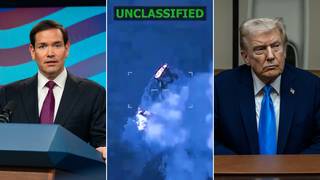
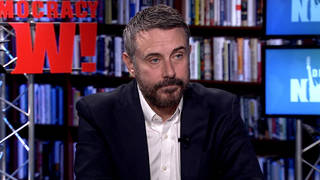
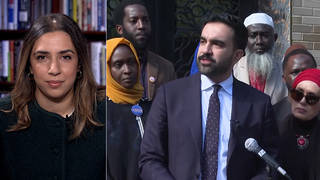
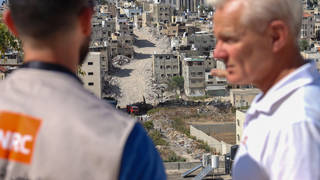





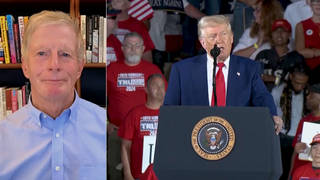
Media Options